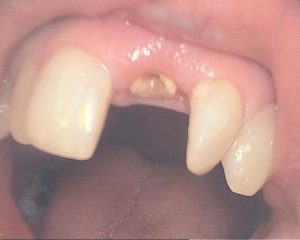

The tannic acid in tea leaves helps to promote blood clotting. If this doesn’t help, an alternative to gauze is a damp tea bag held the same way over the surgical site. If the wound is still heavily bleeding after keeping pressure on it for an hour, change the gauze out every 30 to 45 minutes until the bleeding stops. For the first hour after your surgery, be sure to bite gently down on the gauze that your doctor places over the surgical area. This will help prevent dry socket and excessive bleeding.
To combat bleeding/dry socket – It is very important that you allow a blood clot to form over your surgical wound. Many patients report similar numbness, which can sometimes last 10 to 12 hours after surgery. Numbness – If your mouth feels numb, even hours after surgery, don’t fret. If you start to notice sharp bone fragments protruding from your surgical site, contact us online, call 210.824.0111 or set up an appointment today. This is completely natural and not a cause for concern, but it can cause a bit of pain until the sequestra are removed. When this happens, the dead bone fragments, also known as bone sequestra, will be rejected from the gums. Tooth fragments – In some cases, the surgeon is not able to remove all of the bone fragments from the extracted tooth during the surgery. Contact us online or call us at 210.824.0111 if you have any additional questions or concerns. Schedule an appointment immediately if you think you are suffering from dry socket. If you smoke tobacco or are a woman who uses oral contraceptives, you are at higher risk for dry socket, so keep an eye out for these symptoms. The socket that is formed by the blood clot’s absence can fill up with food and other debris from your mouth, causing pain. Dry sockets happen when the blood clot that forms following the extraction surgery becomes irritated or broken before the healing process is finished. Many describe this pain as shooting up toward the ear. Dry socket – Dry socket is a rare occurrence in which, instead of decreasing, the pain following your surgery will gradually increase until it is unbearable. Swelling should slowly increase, reaching its peak around the second or third day after surgery, before steadily declining. Swelling – Swelling is very normal and to be expected after a surgery. This is partly because cuts to the gums and lips bleed more because of the saliva in the mouth, which makes it hard for the wound to dry out and form a scab. 
Blood will likely ooze from the wound for the first 24 to 48 hours, tinting your saliva pink. Bleeding – Bleeding after a tooth extraction is not uncommon, and even expected.Here at San Antonio Periodontics and Implants, your dental well-being is extremely important, so here are a few things to know for after your tooth extraction surgery.
You need to be sure that you have a full, healthy recovery in order to reap the full dental benefits of this surgery. Your surgery is finally over, but that’s only half the battle.






 0 kommentar(er)
0 kommentar(er)
